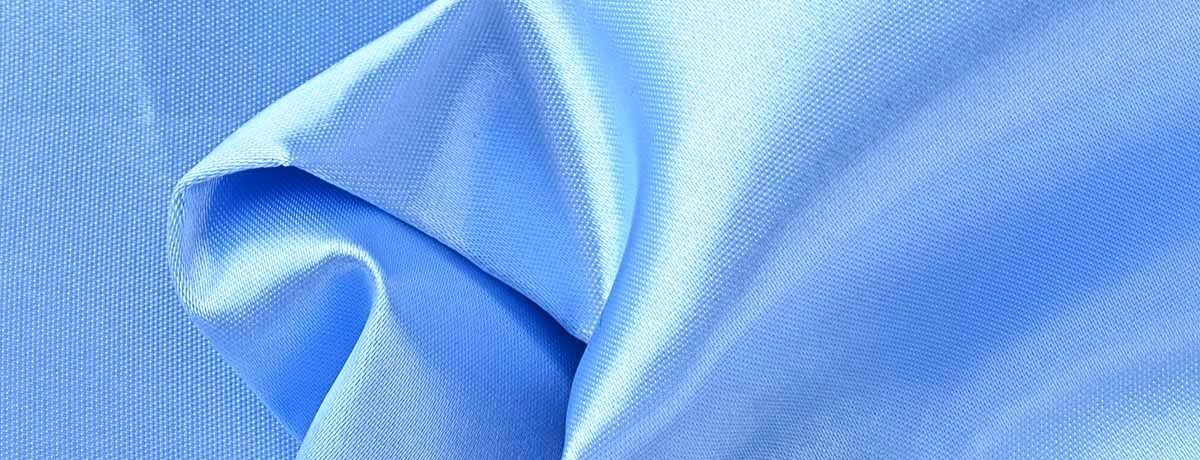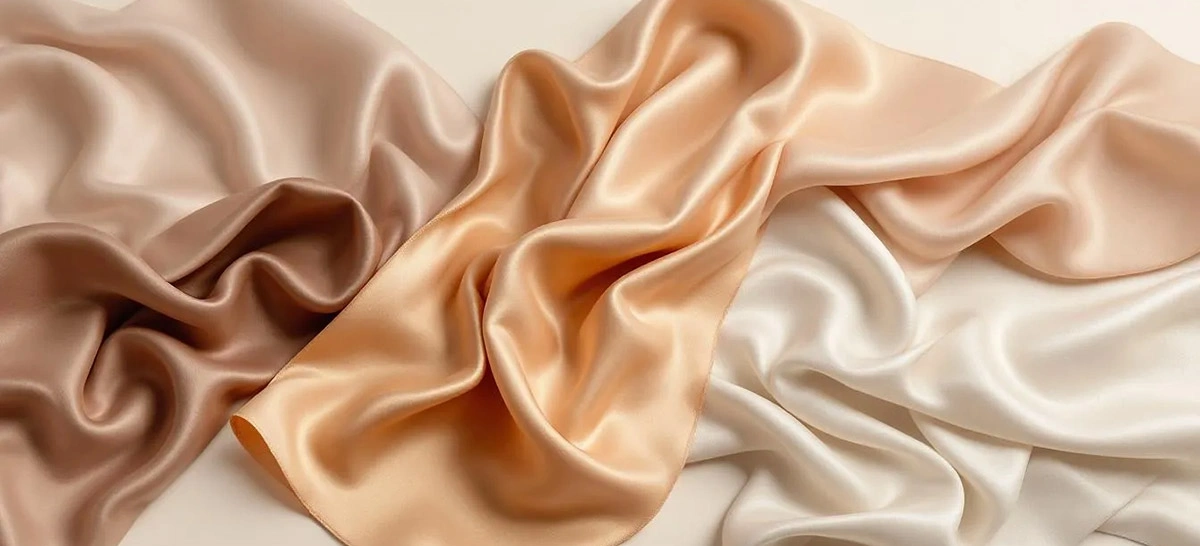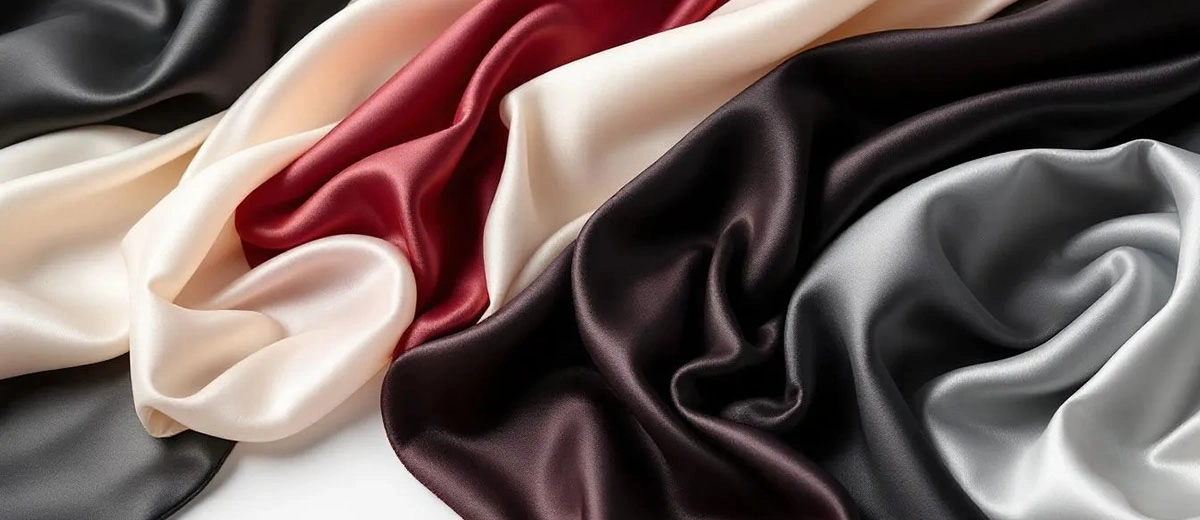Exploring the Key Characteristics of Satin Fabric: Uses and Benefits

Satin’s smooth, glossy surface stems from a unique weaving technique. This article details the characteristics of satin, covering its texture, appearance, and uses in fashion and home decor.
Key Takeaways
-
Satin fabric is characterized by its unique weaving technique, which creates a smooth, glossy surface and can be made from various materials such as silk, polyester, and rayon.
-
Despite its delicate appearance, satin is both durable and luxurious, making it suitable for a wide range of applications in fashion, bridal wear, and home decor.
-
Proper care, including hand washing and air drying, is essential to maintain the quality and longevity of satin fabric, ensuring its attractive sheen and soft texture remain intact.
What is Satin Fabric?

Satin fabric is known for its smooth and glossy surface, setting it apart from other fabrics. Rather than being defined by its material, satin is characterized by its distinctive weaving technique. It can be crafted from materials such as silk, polyester, or fiber blends like cotton and acetate, each providing unique properties and applications.
Satin’s richness comes from its weave satin, with warp yarns floating over weft yarns with minimal interlacing. This technique creates the smooth and lustrous surface that defines satin. Whether made from pure silk or synthetic fibers, a satin weave, including plain weaves, is favored for its luxurious feel and striking appearance.
The Unique Weaving Technique of Satin
Satin fabric’s allure comes from its unique special weaving technique, where warp yarns float over weft yarns with fewer interlaces. This arrangement creates the smooth and lustrous surface satin is known for. The weave minimizes warp thread crossings, resulting in a glossy finish on one side and a dull side texture on the other.
Satin fabrics are made from a variety of materials, including luxurious silk, affordable polyester, and durable nylon. This diversity results in different types of satin suited to various applications. While “satin” refers to the weaving technique, the materials used, like silk and synthetic fibers, influence the fabric’s final characteristics.
Characteristics of Satin Fabric
Satin fabric is celebrated for its distinctive characteristics, which include a smooth and lustrous surface, a soft texture, a shiny texture, and a balance of durability and delicacy. These attributes make satin a versatile and popular choice for various applications, from fashion to home decor.
The following subsections will delve into these key characteristics in greater detail, highlighting what makes satin fabric uniquely appealing.
Smooth and Lustrous Surface
Satin fabric’s hallmark is its smooth and glossy surface, lending luxury to garments and decor. This sheen is achieved through the twisting of warp threads in the weaving process. The tight weave and high thread count also contribute to satin’s lustrous surface, making it ideal for elegant attire and sophisticated home decor.
Imagine slipping into a slipper satin gown or resting on satin sheets; the experience is one of unparalleled comfort and elegance. The smooth surface not only enhances the visual appeal but also feels incredibly soft against the skin, making satin an ideal fabric for those seeking both style and comfort.
Soft Texture
Satin fabric is known for:
-
Its softness, enhancing its luxurious feel
-
A tight weave and high thread count that ensure satin garments are comfortable and elegant
-
Rayon satin, which is particularly noted for its softness, making it a popular choice for both casual and formal attire.
The soft feel of satin makes it suitable for a variety of applications, from sleepwear to elegant clothing. Its comfort against the skin is unmatched, providing a sense of indulgence whether you’re wearing a satin dress or slipping into satin sheets.
Durable Yet Delicate
Despite its delicate appearance, satin fabric is surprisingly durable, especially when made from synthetic fibers like polyester. However, to maintain its beauty and longevity, delicate fabrics like satin must be handled with care.
Avoiding excessive heat during cleaning and drying is essential to preserve its sheen and prevent it from becoming stiff. Using a low heat setting can help achieve this.
Types of Satin Fabric

Satin fabric comes in various types, each with unique qualities suited to different uses. While all satin fabrics share a smooth and glossy surface, materials range from luxurious silk to more affordable polyester and rayon.
Next, we will explore these types in detail, highlighting their specific attributes and common applications.
Silk Satin
Silk satin epitomizes luxury with its smooth texture and shiny appearance. Often used in high-end fashion, including evening gowns, bridal wear, and lingerie, it is favored by modern brides for its unmatched elegance and luxurious feel. Popular color options include white, ivory, pink, and nude.
Natural silk fibers in silk satin contribute to its high-quality feel and durability, making it a preferred choice for memorable occasions and high-fashion garments. Its elegant appearance and soft texture make it a standout fabric in fashion, especially when considering natural fibers made from silk.
Polyester Satin
Polyester satin provides an affordable alternative to silk satin without sacrificing style. Known for its glossy surface and elegant appearance, it is popular for various applications, including formal wear and home decor. Despite its delicate look, polyester satin is durable and long-lasting, especially when made from synthetic fibers.
Fashion designers and home decorators often choose polyester satin for its cost-effectiveness and ability to mimic the luxurious feel of silk satin. Its durability makes it suitable for items requiring frequent use and washing.
Rayon Satin
Rayon satin is celebrated for its silky feel and excellent drape, making it an attractive choice for luxurious garments. Its soft texture enhances comfort and elegance, making it ideal for evening gowns and lingerie. Despite its delicate appearance, rayon satin is durable and suitable for long-lasting garments.
Rayon satin’s luxurious feel and aesthetic appeal make it popular for formal wear and special occasions. Its beautiful drape ensures garments made from rayon satin always look elegant and refined.
Common Uses of Satin Fabric
Satin fabric’s versatility is evident in its wide range of uses, from high-end fashion to home decor. Its smooth, lustrous surface and soft texture make it suitable for various applications, including those that highlight a satin face.
The following subsections will explore how satin fabric is utilized in the fashion industry, bridal wear, and home decor.
Fashion Industry
In the fashion industry, satin fabric is essential for creating elegant and sophisticated garments. Commonly made from this luxurious fabric are:
-
Satin dresses
-
Skirts
-
Blouses
-
Lingerie Many fashion designers favor satin for its beautiful drape and elegant appearance, making it popular for formal wear and special occasions.
Satin dresses, in particular, are highly sought after for events like office parties, birthdays, proms, weddings, and formal occasions. The fabric’s smooth surface and soft texture ensure these garments look stunning and feel comfortable against the skin. Whether a sleek evening gown or a delicate blouse, satin adds sophistication to any wardrobe.
Bridal Wear
Satin fabric is a favorite in bridal wear, with its smooth and lustrous surface making it ideal for wedding dresses. Traditional bridal gowns often feature satin in popular colors like white and ivory. Modern brides also embrace non-traditional satin wedding jumpsuits and pants, highlighting the fabric’s versatility.
Satin’s elegance and luxurious feel make it perfect for creating memorable bridal moments. Whether a classic gown or a contemporary jumpsuit, satin ensures brides look and feel their best on their special day.
Home Decor
Satin fabric is popular for home decor, adding elegance and richness to interiors. Its glossy surface and soft texture make it ideal for upholstery, bedding, and bed linens. Satin bedding, in particular, creates a luxurious and sophisticated look while feeling soft and smooth against the skin.
Satin’s versatility extends to various home decor items, transforming spaces into luxurious retreats. Whether used in upholstery or elegant curtains, satin fabric elevates any room’s aesthetic appeal.
How to Care for Satin Fabric
Proper care is necessary to maintain the beauty and longevity of satin fabric. Cleaning, drying, and ironing each require careful attention to preserve satin’s smooth and lustrous surface.
Next, we will provide detailed guidelines on how to care for satin fabric effectively.
Cleaning Satin Fabric
Hand washing satin fabric with cool water and mild detergent is recommended to preserve its quality and prevent damage. For machine washed fabrics, avoid fabric softeners, which can harm satin’s delicate fibers. Hand washed satin fabric requires special care to maintain its luster.
Silk satin requires dry cleaning only to maintain its integrity and luster. Treat stains promptly with appropriate cleaning agents to keep satin looking its best.
Drying Satin Fabric
Air drying is the best method for satin fabric. Lay it flat on a towel and avoid direct sunlight to maintain its quality. If tumble drying is necessary, use low heat and remove the fabric as soon as it is dry to prevent damage and maintain its natural drape.
Over-drying can make satin stiff and brittle, compromising its appearance and feel. Taking these precautions ensures satin fabric remains soft and luxurious.
Ironing Satin Fabric
Ironing satin fabric requires care. Always iron on the reverse side and use a pressing cloth to prevent damage. Avoid ironing over embellishments to maintain satin’s smooth and lustrous surface.
Summary
Satin fabric, with its smooth and lustrous surface, soft texture, and versatile uses, remains a beloved choice in fashion and home decor. Understanding its unique weaving technique, characteristics, and types allows for informed choices whether selecting satin for a bridal gown, evening wear, or home furnishings. Proper care ensures that satin retains its beauty and elegance, making it a timeless addition to any wardrobe or home.
Frequently Asked Questions
What makes satin fabric so smooth and glossy?
Satin fabric's smoothness and glossiness are attributed to its unique weaving technique, where warp yarns float over weft yarns with minimal interlacing, along with a high thread count. This combination creates the characteristic luxurious appearance and feel of satin.
Can satin fabric be made from materials other than silk?
Yes, satin fabric can be made from materials such as polyester, rayon, and nylon, in addition to silk, each providing distinct characteristics and uses.
How should I clean my satin garments?
To effectively clean satin garments, hand wash them in cool water with a mild detergent. However, for silk satin, it's best to opt for dry cleaning to preserve their integrity and shine.
Is satin suitable for all seasons?
Satin is not suitable for all seasons; it is best for cooler seasons like autumn and winter due to its insulating properties, while it can trap heat in hot weather.
What are the common uses of satin fabric in home decor?
Satin fabric is frequently utilized in home decor for bedding, curtains, and upholstery, enhancing spaces with its elegant sheen and softness. Its use contributes to an overall sophisticated atmosphere in interior design.
Contact MH
MH offer satin fabrics. Please contact us for more details or inquiries. We're here to help!


